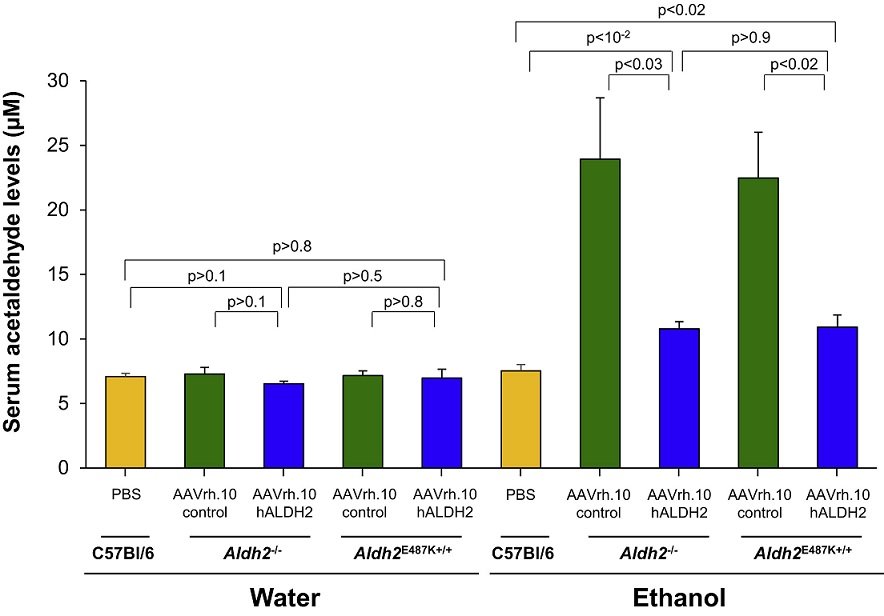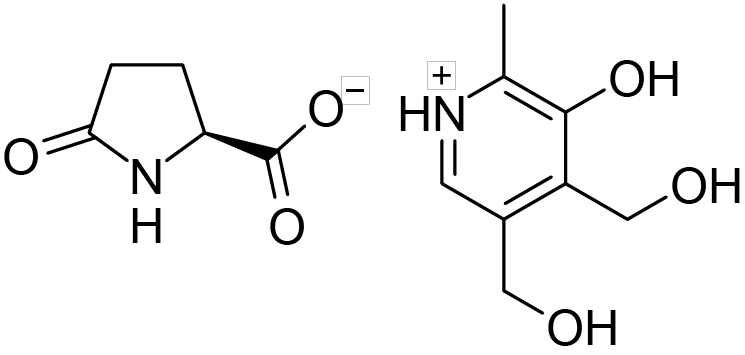While enjoyable to many, drinking is an unpleasant experience for some—associated with nausea, dizziness and pronounced red patches on the face and neck. Often termed ‘Asian Flush’ due to its prevalence in the Asian population, this genetic condition is caused when an individual cannot efficiently break down alcohol. We discuss gene therapy and other methods that could be useful in preventing Asian Flush.
Asian Flush is caused by faulty acetaldehyde dehydrogenase, an enzyme in our liver that breaks down alcohol. In the future, we might be able to prevent Asian Flush by using gene therapy to correct the mutation in our genes. For now, certain drugs (metadoxine) and foods (meat and cheese, in particular) can help counteract its effects.
What Causes Asian Flush?
Alcohol Use Around the World
Alcohol use is widespread, with more than half of adults in the U.S. drinking alcoholic beverages at least once a month. The average daily intake of alcohol for drinkers was 1.94 units, which for most people, isn’t usually enough to cause blackouts, hangovers, nausea and other short-term effects of overdrinking. However, some people suffer from ‘flushes’, a red rash around the face and neck from drinking just several sips of wine.
This condition is often called an Asian Flush due to its prevalence in the Asian population, especially those with Chinese, Japanese or Korean ancestry. Researchers have traced it to a mutation in a gene that impairs the function of the acetaldehyde dehydrogenase enzyme, affecting about 40% of East Asians and 8% of the world population—that’s over half a billion people!
Acetaldehyde Dehydrogenase in Metabolism
When we drink alcohol (ethanol), our body recognizes it as a foreign compound and immediately tries to remove it. First, ethanol in our blood makes its way to the liver. An enzyme called alcohol dehydrogenase (ADH) then converts the ethanol into acetaldehyde. Being highly toxic, the acetaldehyde molecule (not ethanol) is the main culprit for the undesirable side effects of overdrinking.

In typical alcohol metabolism, acetaldehyde is quickly transformed into the less toxic acetate by the enzyme acetaldehyde dehydrogenase (ALDH). Acetate can then be excreted from the body; the pathway for ethanol metabolism is shown in the diagram above. Since people who suffer from Asian Flush have a defective copy of the ALDH gene, large amounts of acetaldehyde are allowed to remain in their blood for long periods.
This quick buildup of acetaldehyde is what causes flushing and general discomfort. There are also long-term health concerns, with ALDH deficient individuals at higher risk of certain cancers caused by high acetaldehyde levels. Although there is currently no treatment for ALDH deficiency, the rest of this article discusses how this might change in the future and ways to prevent Asian Flush in time for your next drink.
Methods to Prevent Asian Flush
Repairing ALDH with Gene Therapy
Since ALDH dysfunction is genetic, targeting genes to prevent Asian Flush makes sense. In 2019, scientists at Cornell University successfully inserted the human ALDH gene into ALDH-deficient mice. Using an adeno-associated virus (AAV) as a vehicle, they engineered liver cells in mice to produce working copies of the human aldehyde dehydrogenase 2 (hALDH2) enzyme. They then tested the mice to evaluate how well this gene therapy technique conferred ALDH activity.

First, blood from the mice was taken 6 hours after a dose of alcohol. The graph above shows that the treatment group with working hALDH2 enzymes had markedly lower blood acetaldehyde levels (blue bars) after ethanol ingestion compared to the untreated control group (green bars). Water was also tested on both groups as a placebo, to counteract the effects of handling the mice.
The scientists also performed behavioral studies to compare the two groups, such as measuring the maximum distance the mice could walk on balance beams without falling off (you can watch the extremely entertaining video here). Overall, the treatment group showed fewer abnormalities.
They continued to study the genetically treated mice, showing that they managed to induce long-term expression of functional ALDH enzymes, reducing acetaldehyde levels after alcohol consumption for at least six months after treatment. This early research could result in a working gene therapy method in the future since consistently high acetaldehyde levels increase our risk for cancers.
Although the genetic repair of ALDH could help in preventing Asian Flush, moving from mouse models to human candidates requires much more research. Furthermore, only a handful of gene therapies are currently approved, all of which are indicated for severe illnesses.
With ethics concerns surrounding repairing the ALDH gene, such as increasing alcohol consumption in treated individuals, it is unlikely that such trivial corrections to our genetic code will be performed anytime soon. So, what other options do we have if we want to avoid Asian Flush?
Counteracting the Flush with Metadoxine
Metadoxine is a mixture of two molecules: pyroglutamic acid and pyridoxine (left and right, respectively, in chemical structure below). The combination as a drug was first discovered in Italy in 1988 for the treatment of liver disease brought on by alcoholism.
While its mechanism of action isn’t fully understood, one of the effects metadoxine has on humans is to increase the activity of acetaldehyde dehydrogenase (ALDH), the enzyme responsible for breaking acetaldehyde down. It also speeds up the removal of ethanol and acetaldehyde from the blood and urine.

In theory, metadoxine could be repositioned as a treatment for Asian Flush; taking the drug before a night out would potentially counteract the effects of having dysfunctional ALDH proteins.
Although the drug is available in many countries, the U.S. isn’t one of them, with the Food and Drug Administration (FDA) ordering a halt to clinical studies in 2017, citing safety concerns regarding its use. However, there is a drug-free method that might work similarly.
Preventing Asian Flush by Eating!
It turns out that the active ingredients of metadoxine are also readily available in many food products. Pyroglutamic acid is an amino acid commonly found in cheeses and yogurts. Pyridoxine—also known as vitamin B6, an essential nutrient in our body— is obtained primarily from meat, although dairy products, eggs and seafood also contain it.
Hence, eating food like meat and cheese before consuming alcohol could help in preventing Asian Flush. It is important to note that pyroglutamic acid and pyridoxine have short half-lives and are quickly excreted from the body, so it makes sense to stuff your face right before drinking. Who knew the advice not to drink on an empty stomach stemmed from science-based evidence?
About the Author

Sean is a consultant for clients in the pharmaceutical industry and is an associate lecturer at La Trobe University, where unfortunate undergrads are subject to his ramblings on chemistry and pharmacology.




